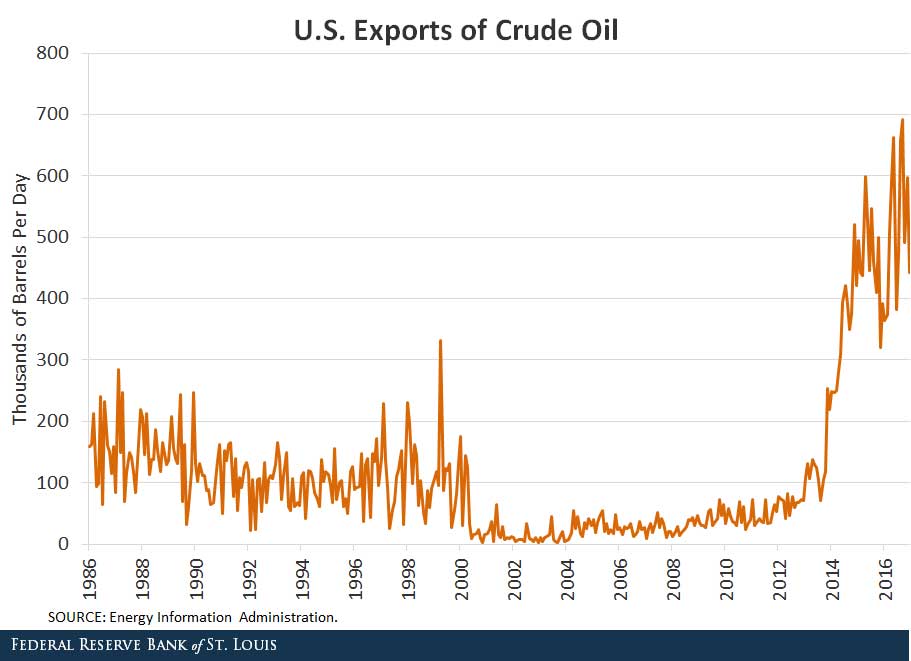Is OPEC Losing Its Ability to Influence Oil Prices?
The Organization for Petroleum Exporting Countries (OPEC) has exerted a great deal of control over world-wide oil production and prices since 1960.1 The figure below shows the percentage of oil production by country for 2015.

OPEC member nations made up 42 percent of world oil production, giving their production announcements significant weight. Historically, announcements from OPEC regarding future decreases in production have been accompanied by increases in prices.2
OPEC and Russia Agree to Cut Production
Late in 2016, OPEC and Russia agreed to cut production from 33.24 million barrels per day to between 32.5 and 33 million barrels per day in an effort to increase the price of oil. Prices had fallen from around $105 per barrel in June 2014 to around $30 per barrel in early 2016.
World oil production, on the other hand, increased 3.1 percent from 2014 to 2015. This increase is large in historical context; oil production has increased 1 percent on average per year since 1980.
Oil Prices
The next figure shows the time series of the price of oil measured by the spot price for West Texas Intermediate (WTI) over the past three years. The red lines indicate the timings of the announcement of the production reduction (Sept. 28) and the OPEC meeting to finalize this agreement (Nov. 30).
While prices have risen slightly since the announcement, neither of these events was accompanied by large spikes in oil prices.
Is OPEC Losing Its Impact on Prices?
So, why have oil prices not increased substantially? A combination of factors may have contributed (albeit not equally) to dampening the effect of the announcement.
First, oil inventories have accumulated over the past few years, and these accumulated inventories are preventing oil prices from rising quickly. Inventories dampen the effects of sudden changes in oil supply or demand.
When OPEC cuts production, supply is reduced, and Organization for Economic Cooperation and Development countries draw on their oil inventories to supplement the reduced production. The market price reaction to the production cut is delayed until the inventories are depleted. However, once inventories are drawn down, prices can be expected to rise.
Second, while OPEC members represent a large portion of oil production, a number of other countries—including the U.S.—account for 58 percent of the oil production and are not part of the OPEC agreement to reduce production.
U.S. Oil Production
The U.S., in particular, is projected to increase its production, especially if the price of oil experiences a sustained rise to more than $55 per barrel. In fact, prices above $35 per barrel are high enough to put some rigs into production.3
As prices increased through the summer of 2016, U.S. oil production rose, with the bulk of this increase coming from rigs in the Gulf of Mexico. The increase in production did not originate from the shale oil fields, suggesting that as prices rise, U.S. oil production can further increase.
In fact, U.S. oil production has increased to the point in which the U.S. has become an exporter. The figure below shows monthly U.S. oil exports.

Banning U.S. Oil Exports
Before 2015, the export of crude oil was banned in the U.S. The ban was a part of the Energy Policy and Conservation Act of 1975, and was meant to lessen the nation’s dependence on OPEC and foreign producers.
During the ban, the U.S. Department of Commerce could issue special licenses to allow certain producers to export specific types of crude oil, keeping exports just above zero. When technological advances increased the amount of oil production in the U.S., U.S. WTI prices started falling below global Brent oil prices. This gap motivated domestic producers to push back against the export ban, and Congress repealed it in December 2015.
Before the repeal, former President Barack Obama had already begun issuing more special licenses to export. Oil exports increased dramatically, from around 400,000 barrels per day at the end of 2015 to almost 700,000 in September 2016.
As the OPEC production restrictions take hold and global inventories are drawn down, the price of oil is expected to rise. This increase, however, may be gradual and prolonged, especially with non-OPEC countries having the ability to ramp up production.
Notes and References
1 OPEC currently has 13 member countries: Algeria, Iran, Iraq, Venezuela, Saudi Arabia, Kuwait, Nigeria, Qatar, the United Arab Emirates, Ecuador, Gabon, Libya and Angola. Indonesia suspended its membership late last year.
2 Lin, Sharon Xiaowen; and Tamvakis, Michael. “OPEC Announcements and Their Effects on Crude Oil Prices,” Energy Policy, February 2010, Vol. 38, Issue 2, pp. 1010-16.
3 Mlada, Sona. “North American Shale Breakeven Prices: What to Expect from 2017?” Rystad Energy, Feb. 16, 2017.
Additional Resources
- On the Economy: The Default Risk of Oil-Producing Countries
- On the Economy: Do Rises in Oil Prices Mean Rises in Food Prices?
- On the Economy: Oil Prices’ Effect on Employment Growth
Citation
Michael T. Owyang and Hannah Shell, ldquoIs OPEC Losing Its Ability to Influence Oil Prices?,rdquo St. Louis Fed On the Economy, March 21, 2017.
This blog offers commentary, analysis and data from our economists and experts. Views expressed are not necessarily those of the St. Louis Fed or Federal Reserve System.
Email Us
All other blog-related questions



